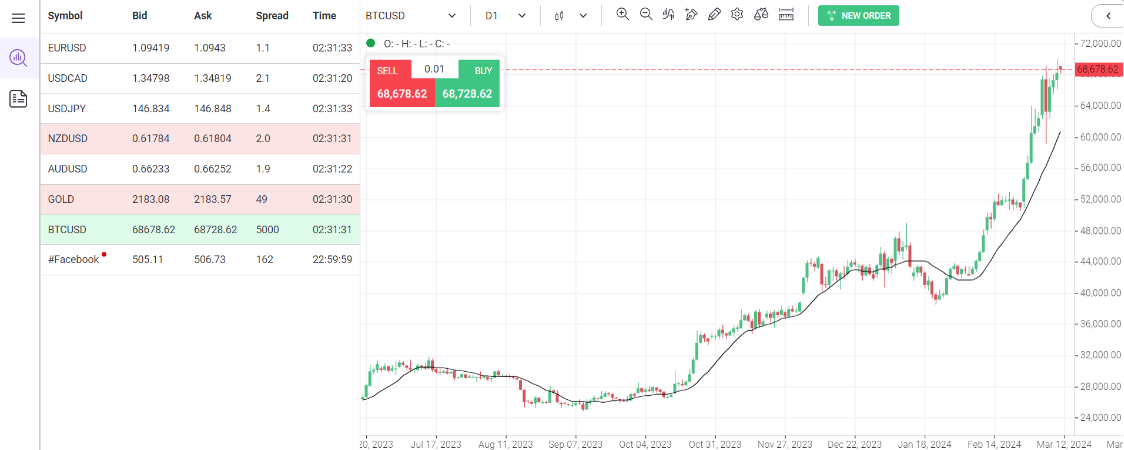How To Teach Crypto Trading To Your Community

Why Teach Crypto Trading To Your Community?
Cryptocurrency has seen explosive growth in recent years, yet the average person's understanding of digital assets remains limited. By educating others in your local area about crypto trading basics, you have an opportunity to empower people from all walks of life with new financial skills. Whether your goal is to spark interest in blockchain's potential, or simply share knowledge that could positively impact lives, community outreach is a rewarding way to promote inclusive participation in this burgeoning economic sector. Beyond formal lessons, leading by informed example as an involved and approachable community resource can help many navigate this complex yet opportunity-rich industry.
What Key Concepts Should Beginner Lessons Cover?
When initially teaching crypto trading to novices, focus should be placed on laying clear groundwork rather than technical intricacies. Explaining digital assets' decentralized nature, blockchain infrastructure basics and the value proposition of currencies like Bitcoin helps contextualize this new paradigm.
Discussing trading as risk-based speculation suitable only for funds one can afford to lose is also prudent. Core topics could include cryptocurrency exchanges, wallet management, fundamental analysis concepts like market capitalization and trading volume, security best practices, and an overview of chart patterns and indicators like moving averages. Keep early lessons conversational yet thorough to cultivate a genuine understanding of crypto's underlying principles, opportunities, and risks.
Which Trading Platforms Are Best For Beginners?

When first exposing others to the mechanics of crypto trading, opting for intuitive yet full-featured exchange interfaces streamlines the learning process. Popular options fitting this criteria include Coinbase, Binance, and Allpips - all allowing simple placement of market orders from fiat onramps. Allpips in particular supports a clean trading solution requiring no advanced technical skills. Informing newcomers about security best practices like enabling two-factor authentication across all platforms selected is prudent. Whatever exchanges are covered, emphasize responsible trading using only funds one can afford to potentially lose.
How Should Technical Analysis Be Introduced?
Technical patterns and indicators are cornerstones of technical trading, yet analyzing crypto charts can seem daunting to newcomers. Start slowly by highlighting basic geometric shapes like symmetrical triangles and key indicators like moving averages.
Explain that historical price action and volume provide clues about crowd sentiment useful for identifying potential support/resistance zones and momentum swings. Charting platforms like TradingView empower visualization and backtesting while avoiding trading requiring registration. Candlestick patterns should also be demonstrated at the beginner level through real crypto charts, though understanding needs time. Repetition and applying concepts to multiple currency pairs over periods help cement technical analysis basics.
Which Crypto Assets Are Best For New Traders?

Major currencies representing the bulk of total crypto market capitalization like Bitcoin and Ethereum remain the safest starting points for newbie traders. Their greater liquidity and trading volumes relative to smaller altcoins mean opening and closing positions face less volatility and slippage risk. Beyond the top two, popular alternatives include Bitcoin Cash, Litecoin, Chainlink, and Cardano due to accessibility on major exchanges. Teach that portfolio diversification is prudent, yet avoid an excess of less established assets until basic skills with blue chips are honed. Low-volatility periods that avoid extreme bull or bear runs also reduce the stress inherent to speculative trading. Overall, recommend starting small and learning through experience.
How Can Further Lessons Expand Knowledge?
Once foundational crypto trading concepts are grasped, additional topics expand strategic insight. Reviewing order types like stop-losses and limits upholds risk management discipline. Introducing fundamental analysis scans industry trends against macro patterns. Compare on-chain Bitcoin metrics against price using Glassnode.
Demonstrate futures, options, and margin trading with caution due to amplified risk. Analyze altcoin cycles through Bitcoin dominance. Review case studies of projects/traders through successes and failures alike - there is knowledge everywhere. Consider technical indicators extending beyond moving averages too. Community members should lead ongoing discussions to cultivate advanced strategies organically. Constantly reinforce that sustainable trading demands diligent study, patience, and optimized risk controls.
How Can Hands-On Experience Be Facilitated?

While theoretical lessons impart crypto trading basics, applied practice remains invaluable. Consider establishing a community simulation contest using fake funds on a paper trading platform. This removes stress while incentivizing strategy testing. Partner with seasoned traders willing to review others' journal entries showcasing learning applications.
Host optional Q&A sessions reviewing real trade situations and outcomes. Promote local meetups for in-person strategy brainstorming. Profile exemplar community members openly documenting live processes to learn from. Maintain positivity through challenges by emphasizing lifelong learning curves. And encourage documenting personal milestones through ongoing study for motivation. Overall, structure opportunities regularly applying insights through cooperative experience
What Communication Methods Are Most Effective?

To maximize educational outreach, employ diverse communication avenues. Periodic newsletter updates keep dispersed community members informed. Maintain an organized social media presence across platforms many already use for convenient access. And consider video-based lessons allowing visually-focused learning styles. Live streaming informal ‘office hours’ allows spontaneous questions.
But in-person workshops fostering human connection remain invaluable where possible. Rotate meetup locations for inclusion. Promote lessons through local online forums and traditional flyers too for broad visibility. And maintain an accessible website/blog centralizing all educational resources. Constant, multichannel outreach tailored to community dynamics optimizes crypto trading knowledge dissemination.
How Can Inclusiveness Be Prioritized?
An inclusive approach welcoming all demographics fosters thriving crypto education. Accommodate accessibility needs through transcript alternatives where able. Craft lessons are understandable by anyone regardless of technical skills or backgrounds. Emphasize there are no 'dumb' questions, only learning opportunities. Promote respect among all attendees through positivity and equality.
Pair experienced traders with newcomers to remove intimidation factors. And rotate lesson leaders among community members to facilitate diverse perspectives. Consider targeted workshops for women, minorities, or age groups historically underrepresented. Overall, cultivate a judgment-free atmosphere prioritizing open-minded knowledge-sharing. A friendly, inclusive community nurtures lasting participation and interest in cryptocurrency.
What Risks Require Ongoing Discussion?
While crypto trading promises reward potential, inherent risks require constant emphasis to spread knowledge responsibly. Remind community members that volatility creates uncertainty, and education imparts awareness, not guarantees. Strongly advise commencing with paper trading and small live sums while skills develop.
Discuss psychological principles like fear and greed skewing decisions. Promote secure custody of private keys, safe password/authentication practices, and beware of fraud. Stress the importance of independent verification of all information encountered. Make clear one bears sole responsibility for their investment or trading actions. And promote holistic well-being through balance, as excessive speculation can become addictive. Constant risk awareness maintains a focus on learning through both successes and failures.
Conclusion | How To Teach Crypto Trading
By orchestrating inclusive, multifaceted crypto trading education within a local community, newcomers gain empowerment in accessing blockchain opportunities through shared knowledge. While technical skills develop over the long run, a foundation of prudent risk awareness can guide members' initial experiences.
Leveraging diverse communication avenues, hands-on practice and the experiential wisdom of more seasoned participants helps lessons durably resonate across demographics. With adequate attention to cultivating an inviting atmosphere prioritizing respect, cooperation, and mutual learning, cryptocurrency's potential for positive impact across society can organically take root.